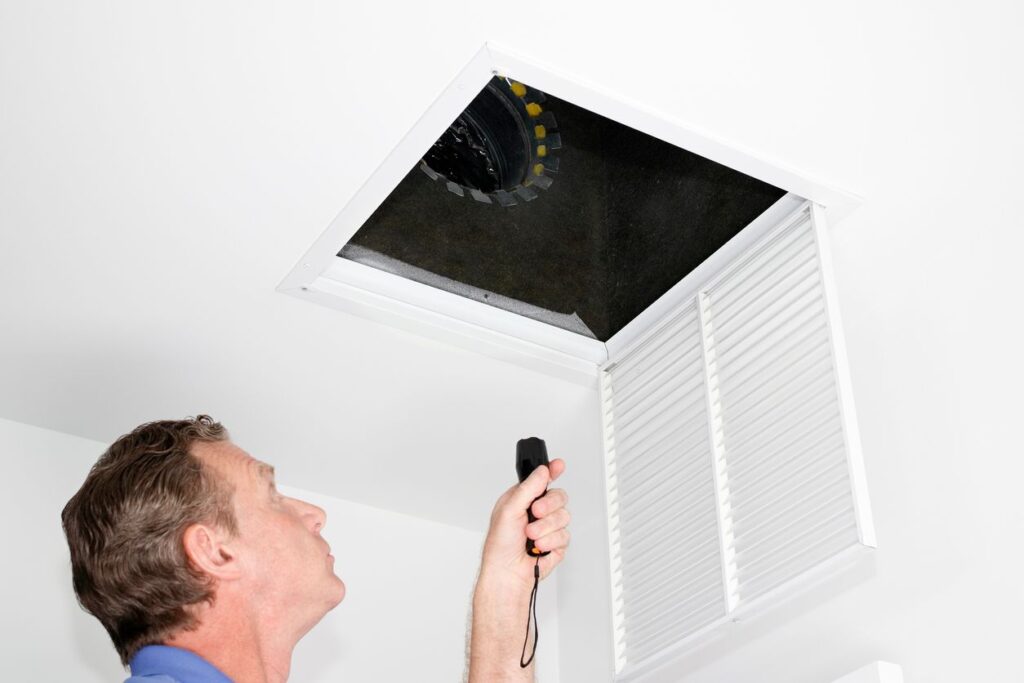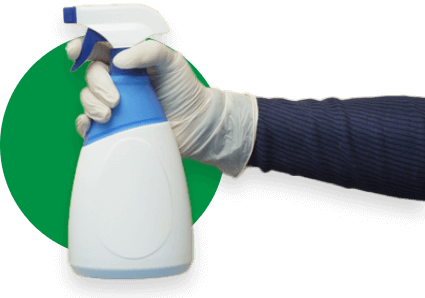Maintaining clean air ducts in apartment buildings directly impacts tenant health, HVAC system efficiency, and operational costs. Property managers face unique challenges when managing air quality across multiple units, making professional air duct cleaning essential for apartment complexes. According to the U.S. Department of Energy, 25 to 40 percent of energy used for heating and cooling is wasted due to contaminants in HVAC systems.
Why Apartment Buildings Need Specialized Air Duct Cleaning
Air ducts function as conduits that supply warm or cool air to heat, ventilate, and cool each room throughout your apartment building. These ducts connect to the HVAC unit, which filters and conditions your building’s air before distributing it. This ventilation network serves as a vital component for maintaining thermal comfort and healthy indoor air quality for all residents.
When contaminants settle inside heating and cooling equipment, they accelerate wear and tear on crucial components. Parts deteriorate faster, leading to more frequent breakdowns and costly service calls. The accumulated stress placed on your HVAC system can erase years from its expected service life.
Top 7 Benefits of Clean Air Ducts
Eliminating dust, dirt, mold, and other hazards from air ducts delivers multiple critical advantages for apartment buildings:
- Improved HVAC Performance – Your system operates more efficiently with better ventilation throughout the building, greater operational reliability, and substantially lower energy bills
- Decreased Allergy Symptoms – Residents experience fewer respiratory issues when allergens, dust mites, and irritants are removed from the ventilation system
- Protection Against Mold Spread – Professional cleaning prevents mold spores from spreading between units through shared ductwork systems
- Extended Equipment Lifespan – Clean systems experience fewer breakdowns and reduced wear on components, translating to lower repair expenses over time.
- Reduced Dust Accumulation – Tenants spend less time cleaning as properly maintained ducts stop blowing dust onto furniture and surfaces throughout apartments
- Prevention of Cross-Contamination – Specialized cleaning techniques ensure contaminants from one unit don’t travel through shared ventilation to affect other residents
- Lower Operational Costs – Energy efficiency improvements and reduced maintenance needs create significant savings on utility bills and service calls.s
Maintaining clean ducts through regular filter replacements and scheduled maintenance helps your heating and cooling system last longer with fewer interruptions. The money saved from avoiding premature equipment replacement and emergency repairs adds up significantly for property owners.

Step-by-Step Guide to Cleaning Air Ducts in Apartments
Professional duct cleaning involves advanced cleaning methods using specialized tools to remove contaminant matter from inside the ductwork while preventing debris from entering living spaces. Standard household vacuums lack the power to extract and contain debris from commercial ductwork systems effectively.
Essential equipment for proper duct cleaning includes:
- Industrial-strength vacuum systems with collection capabilities
- Heavy-duty gloves and protective gas masks or goggles
- Stiff-bristled brushes specifically designed to scrape stubborn debris
- New furnace filters for replacement after cleaning
- Professional-grade microfiber cleaning cloths
- Power drills or screwdrivers for vent removal
Follow these nine critical steps for thorough air duct cleaning:
1. Detach a Single Vent Cover
Professional cleaners start by carefully removing one vent cover to access the ductwork. Key considerations for this step include:
- Using appropriate tools to prevent damage to apartment fixtures
- Documenting vent locations for proper reassembly
- Inspecting visible contamination levels before proceeding
2. Seal Off Other Vents with Paper Towels
Creating proper negative air pressure requires strategic vent blocking. This technique involves:
- Blocking all other vent openings throughout the system
- Ensuring dirt and dust are extracted back into the vacuum collection equipment
- Preventing debris from blowing into occupied apartment spaces
3. Activate the “Fan On” Setting on AC Units
Running the fan during cleaning serves multiple purposes:
- Helps dislodge accumulated debris from duct surfaces
- Allows vacuum systems to capture loosened particles more effectively
- Maintains air circulation to identify problem areas
4. Eliminate Dust from Supply and Return Registers
Thorough register cleaning requires specific attention to these high-traffic components:
- Using brushes designed for register grates and openings
- Applying vacuum attachments to extract embedded debris
- Removing heavy dust accumulation that impacts air quality throughout the building
5. Sweep and Vacuum for Enhanced Performance
Professional-grade cleaning combines multiple techniques for optimal results:
- Applying agitation methods to loosen stubborn deposits
- Using negative air pressure for complete debris removal
- Ensuring thorough extraction from all ductwork surfaces
6. Power Down the Fan to Cut the Power Supply
Safety protocols require a complete system shutdown before proceeding:
- Shutting down the HVAC system completely
- Verifying power disconnection before accessing mechanical components
- Protecting sensitive equipment from damage during cleaning
7. Clean the Return Air Boot and Blower Compartment
These critical areas require specialized attention:
- Removing accumulated debris where dust collects most heavily
- Clearing restrictions that limit airflow efficiency
- Accessing components that standard cleaning often misses
8. Reattach Vent Covers and Air Grill Plates
Proper reassembly ensures continued system performance:
- Securing all components according to the manufacturer’s specifications
- Verifying the appropriate seal to maintain system integrity
- Checking alignment to prevent air leaks or rattling
9. Check the Air Filter for Possible Replacement
Final inspection and maintenance complete the cleaning process:
- Installing new filters to maintain optimal airflow
- Preventing immediate recontamination of cleaned ducts
- Documenting filter replacement for maintenance schedules
Professional services ensure source removal—actually extracting dust, dirt, and pollen from your system rather than simply dislodging and redistributing contaminants. Consider services that provide comprehensive commercial sanitation services using proper techniques for apartment complexes.
How Much Does Air Duct Cleaning Cost for Apartments?
According to NADCA and the EPA, professional air duct cleaning typically costs between $450-$1000 per unit. Pricing varies based on multiple factors specific to apartment buildings.
Pricing Structure Options
Common pricing structures used by professional cleaning services include:
- Per-vent pricing: Charges based on the number of registers and grilles in each unit
- Flat fee plus vent: Combines base service charge with additional per-vent costs
- Square footage calculation: Pricing determined by apartment size
The number of air devices determines your system size. Multiple air handling units in larger buildings impact overall pricing.
Cost Factors for Apartment Buildings
Several key factors affect the total cost of apartment duct cleaning services:
- System complexity and the number of air handling units
- Total count of registers and grilles requiring service
- Accessibility of ductwork throughout the building
- Level of contamination requiring removal
- Building size and number of units serviced
Professional services use agitation combined with negative air pressure techniques, locating all air devices to ensure proper sealing during the cleaning process.
Long-Term Cost Savings
Investing in routine air duct cleaning proves cost-effective for property owners through multiple financial benefits:
- More efficient HVAC systems consume less energy
- Lower monthly utility bills from improved performance
- Fewer maintenance issues requiring service calls
- Reduced expenses from emergency repairs
- Extended equipment lifespan, avoiding premature replacement
Regular maintenance creates substantial savings that offset the initial cleaning investment.
Key Indications: It’s Time to Clean Your Apartment’s Air Ducts
The National Air Duct Cleaners Association recommends cleaning every 3 to 5 years for most residential environments. However, apartments with pets, smokers, or residents with severe allergies benefit from more frequent service.
Warning Signs Requiring Immediate Attention
Property managers should watch for these critical indicators that signal the need for professional duct cleaning:
- Visible Dust from Vents – Dust exiting vents represents just the tip of the iceberg, with significantly more contamination lurking inside your ductwork
- Persistent Mold Growth – Mold in air ducts gets blown throughout apartments and deposited everywhere, allowing growth in new locations and triggering health issues.s
- Rising Energy Costs – Motors and blower fans clogged with dirt reduce airflow, forcing systems to work harder and consume more energy
- Increased Allergy Symptoms – Residents experiencing itchy eyes, sneezing, sore throat, and wheezing despite the allergy season ending indicate poor air quality
- Unpleasant Odors – Musty smells from vents signal various contaminants trapped inside ductwork, requiring removal
Even with diligent cleaning routines, you’re doing double the work if ducts continuously blow dust onto surfaces.
Common Contaminants Found in Apartment Ducts
Regular apartment duct cleaning removes these accumulated substances:
- Hairballs and fabric lint from laundry areas
- Pet dander and dead skin flakes
- Dust mites and bacterial colonies
- Pollen and outdoor allergens
- Mold spores and mildew growth
No amount of filter changing or thermostat adjustments compensates for the efficiency loss caused by these contaminants.

Optimize Your Apartment’s Air Duct Cleaning with Dallas Janitorial
Dallas Janitorial Services brings years of expertise to apartment duct cleaning projects. Our trained professionals perform advanced cleaning methods using specialized tools to remove contaminants while preventing debris from moving into living spaces. We understand the unique challenges apartment complexes face and deliver solutions that improve air quality building-wide.
Schedule your professional air duct cleaning today. Contact Dallas Janitorial Services for a free consultation and discover how proper maintenance transforms apartment living. Read our customer reviews to see why property managers trust us with their air quality needs.
FAQs About Air Duct Cleaning for Apartments
How long does it take to clean air ducts in an apartment?
Air duct cleaning takes anywhere between an hour and a full day for commercial HVAC systems. A standard cleaning requires two to three hours, covering the HVAC unit, primary return, room vents, and the air ducts themselves.
How much is air duct cleaning for an apartment?
Professional cleaning costs $450-$1000 according to NADCA and EPA guidelines. Your service should include source removal and cleaning all accessible HVAC system components for this price range.
How often should air ducts be cleaned in an apartment building?
The National Air Duct Cleaners Association recommends air duct cleaning every 3 to 5 years as a general rule. This schedule ensures maximum efficiency for your HVAC system maintenance.
How do I clean my apartment’s AC vents?
Turn off your HVAC system and locate vents. Remove vent covers, wipe with damp microfiber cloths, and scrub with soft-bristled brushes if needed. Place covers in warm, soapy water and vacuum any dirt or debris visible in the air duct opening.
How can I stop smells from coming through the vents in my apartment?
Use activated charcoal bags, vent filters, or gel odor absorbers near affected vents. These products trap and break down odors rather than masking them. Check whether filters appear dusty or clogged and replace as needed.







